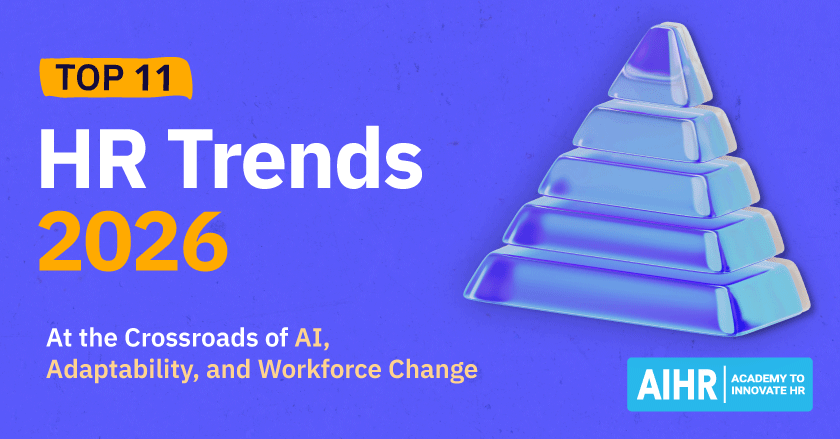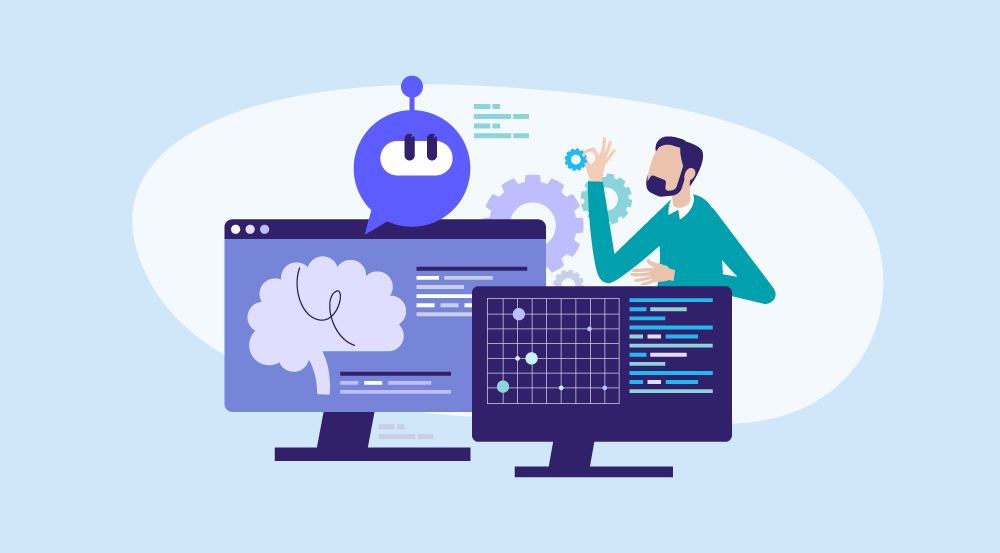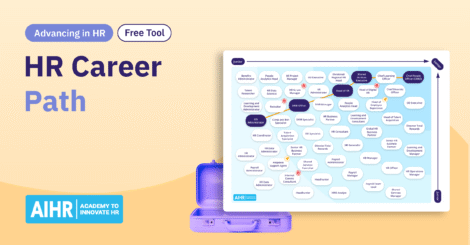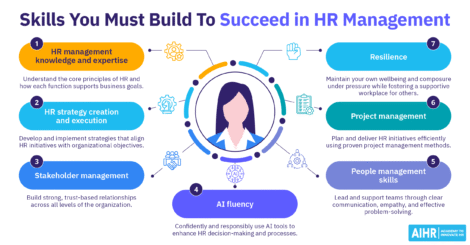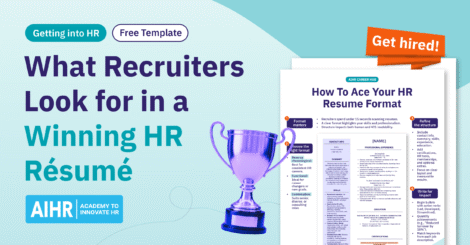AI Fluency is quickly becoming a must-have skill for HR professionals. If you’ve used tools that help with resume screening, interview scheduling, or employee feedback analysis, you’re already seeing how AI is reshaping HR. In fact, nearly 70% of HR teams are now using at least one AI-powered tool, and the results speak for themselves: faster hiring, reduced admin time, and stronger employee engagement.
But using AI effectively goes beyond adopting tools. HR practitioners need to understand how these systems work, know their limitations, and apply them ethically and strategically in everyday practice. Let’s take a look at what exactly AI Fluency is and how HR professionals can develop it to future-proof their skill sets and become irreplaceable within their organization.
Contents
What is AI Fluency?
What does HR AI Fluency look like in practice?
Why you need to develop AI Fluency
How you can develop AI Fluency
How HR leaders can upskill their teams in AI Fluency
What is AI Fluency?
AI Fluency in HR refers to the ability to collaborate with AI confidently and thoughtfully, using it to augment human judgment rather than replace it. It empowers HR professionals to turn AI’s potential into real-world outcomes like faster, fairer decisions, smarter workflows, and better employee experiences.
AI Fluency consists of four distinct dimensions that are core to every HR professional’s AI skill set. These are:
Confident AI Application
This dimension focuses on building a solid foundation. It starts by understanding what AI is, how it applies throughout the employee life cycle, and where it can add real value.
HR professionals who are competent in this area intentionally use AI tools: creating effective prompts, critically evaluating outputs, and enhancing their daily work through informed and confident use. Whether it’s screening candidates, summarizing employee engagement insights, or drafting policies, confidence stems from knowing how and when to integrate AI into the process.
Responsible AI Use
As an HR professional, you play a vital role in ensuring AI is applied ethically, fairly, and in ways that gain employee trust. This focus emphasizes the use of AI to enhance, rather than replace, human capabilities while maintaining privacy, inclusivity, and organizational values.
You also need to understand the risks, implement governance principles, and establish safeguards to use AI responsibly in people practices.
AI Adoption Advocacy
AI Fluency involves having the courage to lead by example and promote the right behaviors within the organization. The AI Adoption Advocacy dimension within this is about actively exploring, testing, and sharing AI use cases within teams to encourage adoption and dispel fears and misconceptions. It’s not about knowing all the answers but about being curious, adaptable, and willing to help others build confidence with new technologies.
By demonstrating effective use, encouraging continuous learning, and aligning AI strategies with business needs, HR professionals can become advocates for sustainable, people-centered adoption of AI.
AI Work Integration
AI Fluency becomes truly impactful when it becomes part of one’s daily work. This aspect emphasizes finding opportunities for smarter workflows, creating AI-enabled solutions to address real business problems, and integrating them into HR processes to achieve better results.
From automating routine tasks to enabling more data-driven decisions, fluency here involves applying AI in practical, scalable ways that boost both efficiency and employee experience.
Build real AI Fluency and bring it into your HR practice
As AI reshapes HR, fluency in this fast-changing space is quickly becoming a must-have. Whether you’re just getting started or looking to apply AI more strategically, now is the time to build the skills that set you apart.
AIHR’s Artificial Intelligence for HR Certificate Program teaches you to:
✅ Understand key AI concepts and how they apply to HR
✅ Use generative AI tools like ChatGPT in real-world HR tasks
✅ Identify and evaluate AI use cases across the employee life cycle
✅ Apply AI responsibly, ethically, and with clear business impact
🎓 Stand out in HR with practical, future-focused AI skills.
What does HR AI Fluency look like in practice?
HR professionals with strong AI Fluency don’t just use tools. They recognize where AI can enhance their work, apply it thoughtfully, and help others do the same. These are some of the behaviors that reflect strong AI Fluency:
Identifying AI opportunities in everyday work
AI-fluent HR professionals recognize patterns in their work that could benefit from automation, faster analysis, or content generation. They spot use cases like streamlining onboarding processes, summarizing feedback surveys, or producing first drafts of HR communications. Rather than waiting for formal implementation, they explore where AI can support their goals and bring potential use cases forward.
Ultimately, AI Fluency is about making the technology an integral part of your daily routine. HR professionals with this competency design or adapt workflows so that AI fits naturally into existing processes, without creating friction or duplication.
Using and prompting AI tools effectively
These HR professionals use the right tools for the job, and they know how to communicate with AI clearly. They write specific prompts that provide enough context and refine them based on the quality of output. For example, when generating a learning guide, they would include the employee’s level, goals, tone of voice, and format, and continue with follow-up prompts.
They understand what the tool is capable of and when it needs extra guidance, refinement, or human review.
Applying AI responsibly and transparently
AI-fluent HR professionals understand that how AI is used is just as important as what it delivers. They critically review AI-generated outputs, refining before applying them in real-world contexts such as employee communications, policy development, or learning recommendations. When they share AI-assisted work, they clearly communicate which parts were generated by AI, how the tools were used, and where human judgment shaped the final outcome.
They also remain aware of broader responsibilities. This includes identifying biased outputs, avoiding automation in high-stakes or sensitive situations, and safeguarding employee data. Whether selecting tools, writing prompts, or interpreting results, they consistently consider ethical implications and align their decisions with organizational values, privacy expectations, and HR’s trusted role. By combining transparency, fairness, and accountability in their approach, they help build trust in how AI is applied throughout the employee experience.
Enabling team adoption through experimentation and support
HR professionals fluent in AI help teammates become more comfortable with AI by sharing what they’ve learned, offering prompt templates, and answering questions without judgment.
They also regularly test new tools or features, reflect on what works, and apply those learnings to future use. Instead of waiting for formal training, they set aside time to explore and learn. If something doesn’t work, they adjust and try again. Experimentation is seen as part of the job, not an extra task.
Overall, learning through experimentation and sharing those learnings helps create a culture of exploration and open discussion within the HR team. This lowers the barrier to adoption and strengthens collective capability.
Why you need to develop AI Fluency
With AI reshaping the world of work, AI Fluency is emerging as an essential competency for building a future-ready HR career, strengthening the HR function, and driving organizational change.
Here’s why you should focus on developing AI Fluency:
- Future-proof your HR career by gaining skills that remain relevant as technology advances
- Enhance human qualities like empathy, ethical reasoning, and contextual judgment through effective AI collaboration
- Unlock smarter decision-making by confidently interpreting and applying AI-generated insights
- Boost HR productivity and impact by streamlining tasks and improving daily workflows
- Build trust and transparency by promoting ethical, fair, and inclusive AI use in people processes
- Position HR as a strategic partner in organizational AI transformation, not just an end user
- Foster innovation and experimentation through confident, informed use of AI tools
- Reduce risk by integrating responsible governance into the use of AI with workforce data and decisions
- Build a culture of adoption by enabling HR to role model AI Fluency and support others in building confidence
- Align AI applications with business goals, ensuring technology enhances people and performance outcomes.
As AI becomes embedded in every stage of the employee life cycle, AI Fluency empowers HR to confidently engage with these tools, interpret their outputs, and apply them in ways that are ethical, human-centered, and aligned with business needs. It shifts HR from being passive users of technology to active shapers of its role in the workplace, driving smarter decisions, stronger trust, and more future-ready people practices. Put simply, AI Fluency is what allows HR to lead the transformation, not just keep up with it.
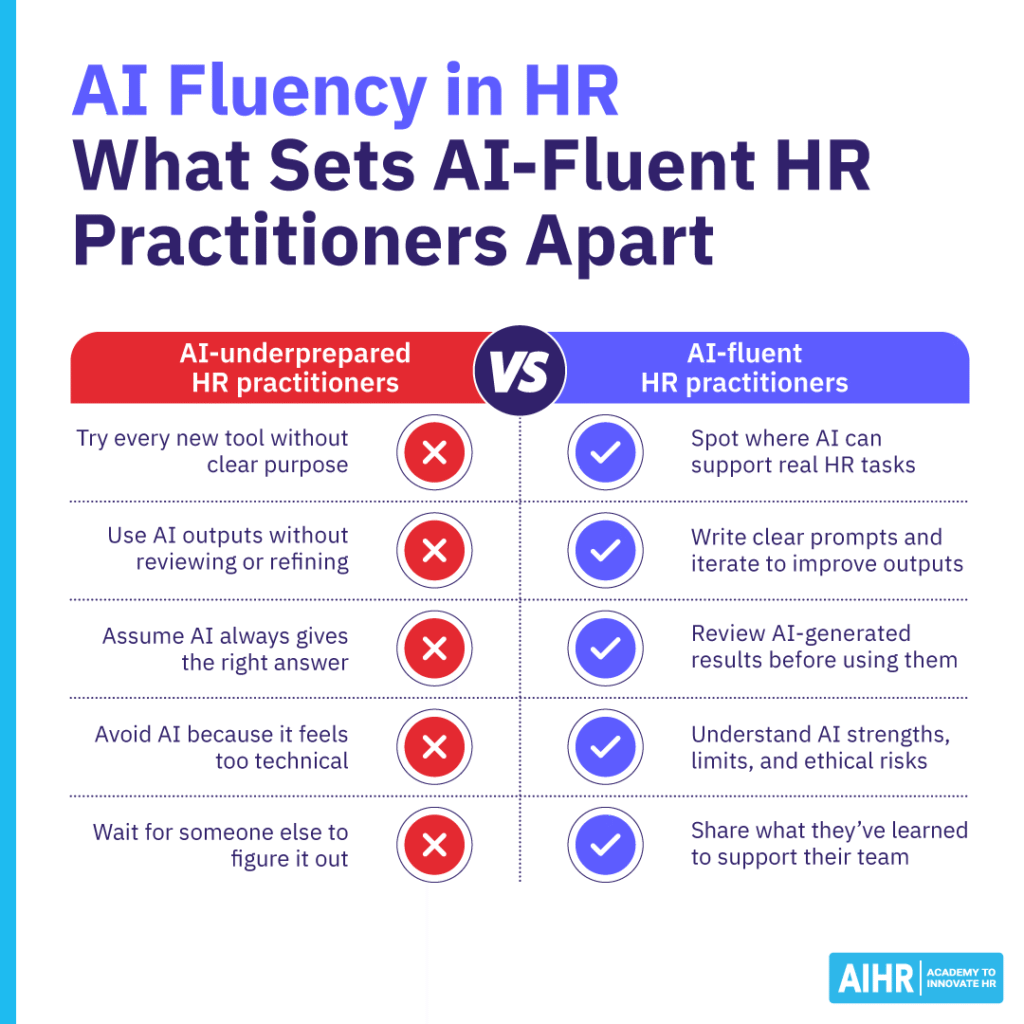
How you can develop AI Fluency
Developing AI Fluency is about building the confidence, curiosity, and critical thinking needed to work alongside AI in meaningful ways. Whether you’re just starting out or already using AI tools in your day-to-day, growing your fluency is a continuous, hands-on process. Here are practical ways you can build this essential competency:
- Know where to focus: Take the AI Fluency Assessment to benchmark your current knowledge and skills, identifying areas for growth and tracking your progress over time.
- Get hands-on with AI tools: Start using AI in your own workflow to draft communications, summarize documents, generate ideas, or analyze feedback using tools like ChatGPT or internal platforms. Additionally, practice critically interpreting AI outputs by asking how decisions are made and align with your own judgment.
- Set aside time to experiment and explore: Block time regularly to test out new tools, prompt styles, or AI features, and reflect on how they can enhance your work. Explore how you could leverage AI across the employee life cycle to enhance work efficiency, productivity, and quality.
- Learn from others: Talk to colleagues in marketing, data, or IT to understand how they’re applying AI. This cross-functional insight can spark new ideas for HR. Join discussions and communities focused on AI in the workplace to stay engaged and exchange ideas.
- Subscribe to the AI for HR Launchpad: Stay current with curated resources, use cases, prompts, and practical learning paths designed specifically for HR professionals.
How HR leaders can upskill their teams in AI Fluency
For HR leaders, building AI fluency across the team should focus on creating the right conditions for learning, experimentation, and confident adoption. Here’s how you can start building AI fluency across your team today:
- Identify your biggest gaps and start building those competencies first: Use structured frameworks to assess your team’s current level of AI fluency and pinpoint specific areas for development, such as prompting, tool use, or responsible AI practices.
You can get started right away with AIHR’s HR Leader’s Guide to Building AI Competencies.
- Fast-track development in core areas: Enroll your team in AIHR’s AI for HR Boot Camp, as a practical, hands-on program designed to quickly build confidence, capability, and real-world application of AI in HR.
- Identify AI champions in the team: Look for early adopters who are already exploring AI and empower them to become learning catalysts, peer coaches, or ambassadors for responsible experimentation.
- Build AI Fluency into performance and learning goals: Treat AI Fluency as a strategic priority, not a side task. Include it in development conversations, goals, and team priorities to create sustained momentum.
To sum up
AI is no longer just a futuristic trend. It’s now embedded in the way organizations operate, make decisions, and deliver value. For HR professionals, being fluent in AI is crucial for keeping up and, what’s more, for stepping into a more strategic and influential role. It allows you to engage with AI confidently, shape its use, and ensure it supports people in meaningful and ethical ways.
The most future-ready HR professionals will be those who know how to work with AI, not as passive users but as active agents of change. By investing in your own AI Fluency and promoting it within your team, you’re getting the HR function ready to lead the transformation of work. The time to start is now.


